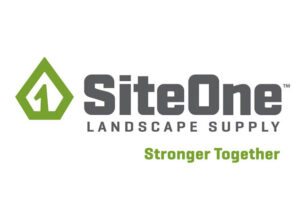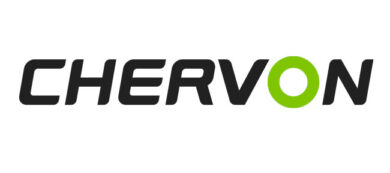Five SEO mistakes that you shouldn’t be making (anymore)
By Blane Vik
In June 2013 OPE, I busted five Search Engine Marketing myths. In this article, I’m going to turn our attention to Search Engine Optimization (SEO) and the five most common mistakes dealers make when using SEO.
I’ve noticed a good trend and, at the same time, a bad tendency.
The good trend: The majority of outdoor power equipment dealers recognize the importance of having a website that is search engine optimized and are interested in achieving top organic rankings on the search engines.
The bad tendency: Most dealers believe that their website is fully optimized, just because it includes the standard pages, navigation, inventory and brands carried.
The hard truth: The majority of websites are not as optimized as they could/should be.
Read on. If you’re making any of the following SEO mistakes, here are some easy fixes you can make to your website that will help drive more qualified traffic, generate more leads, and sell more products — online and in–store.
Mistake #1 — Your website content is less than inspiring; in fact, it’s blah.
THE FIX: If you want your website to appear — and stay — at the top, the search engines must perceive your content as the most relevant for the search query that the consumer has entered. Based on a complex algorithm, the search engine ranks all the sites it “sees” based on their relevance to any given query. The goal of every search engine is to put the most authoritative websites at the top. What does that mean to you? Having the right content — and the right amount of it — is mandatory.
To be successful, your website must contain unique, compelling content that’s relevant to the search terms that your audience is using.
* Relevant keywords. Starting with your home page, make sure that every page contains 300 to 500 words of unique content peppered with your most relevant keywords. At a minimum, the home page should include a description of your dealership that is close to 300 words and includes words like “new equipment,” “zero turn,” “Toro,” “Simplicity,” “Service,” “Financing,” “your name,” “your location” — all in an easy–to–read format. This is the type of content that search engines look for and love!
* Direct links. Use keywords to link consumers and spiders to relevant content throughout your site (e.g. clicking on “service” should immediately take the visitor to your service page).
* Meta Tags. The most important meta tag on every page of your website is the Title Meta Tag. This tag (maximum of 70 characters) is what the search engines display when they find your website organically. In addition, a good way to positively impact your search rankings is to make sure that each page on your website details the unique content of a web page in as few words as possible (maximum of 160 characters) in a Description Meta Tag. The content in your description meta tag is usually what the search engines display below the results title when your website is found organically. That said, it’s important that you include your company name, brands, services and products that are found on that page.
Here’s an example of how it works: When a consumer searches for “honda snowthrowers green bay,” the search engines look at the title tag, description tag and content of each page on your website. Based on what they find, they return the most relevant web pages that match the search query. In this example, the number one organically ranked site was:
The keywords contained in the title tag (headline) are normally highlighted in the results by search engines. The description that appears below the title is normally the content of your description tag. Here again, the search engine highlighted the keywords used in your search.
Mistake #2 — Not so local.
THE FIX: The majority of your website traffic and potential customers comes from your local marketplace, so your content should revolve around the local angle. What cities, towns and counties does your dealership serve? Spelling it out for the search engines will help you achieve top rankings. Use your area’s top cities and towns in your content, web page titles and web page descriptions.
Mistake #3 — No time for social media.
THE FIX: Social media is the fastest–growing area for search engine queries, now accounting for almost one third of the total search market, yet it’s widely ignored by too many outdoor power dealerships. How current is your Facebook page? Do you even have one? Are you tweeting whenever you update your page?
If you aren’t currently actively involved in the social scene, get started now. This is a great opportunity to promote your dealership, your products and your service while engaging in a two–way conversation with buyers. This is also a great way to keep your website content fresh and unique.
Mistake #4 — It’s about my dealership, not the brands I carry.
THE FIX: Many outdoor power equipment dealers fail to highlight the brands they carry on their home page, yet most consumers enter a brand name and a geographic location when searching for equipment. You know your top–selling brands and models, but the search engines don’t. Spell it out for them.
Make sure that your top brands are listed on your home page. Are they highlighted? Do you have them linked directly to your current inventory or brochures? What about logos and product images? If you’re a Simplicity dealer in Louisville, Ky., make sure your website is found and returned in the results when a consumer types in “Simplicity Tractor Louisville Kentucky” by including those keywords in your content. If you don’t, it’s highly unlikely that the search engines will include your dealership in the results.
You can make the search engines and buyers take notice and increase the relevance of your website by following these best practices. These same intuitive and easy–to–follow guidelines will make buyers take notice and find your top brands and models quickly and generate more sales opportunities for your dealership.
Mistake #5 — No time for local listings.
THE FIX: I’ve already touched on the importance of local search in Mistake #2. Another key aspect of going local is claiming your local listing on Google+, Yahoo, Bing and Yellow Pages. Be sure to keep your business listings updated. Most consumers rely on local search results when it comes to buying equipment and servicing that equipment.
SEO is not a fad; it’s an essential tool for competing and winning in your local market. An effective strategy helps people looking for the equipment you sell and service to find your website, not your competitions’. Quick fixes and tricks won’t cut it. In order to reap all the benefits, you must be diligent about your SEO efforts. Avoiding common mistakes is a great way to get started.
Blane Vik is Search Engine Marketing Manager at ARI, a provider of technology-enabled business solutions for dealers, distributors and manufacturers in the outdoor power equipment, powersports, automotive tire and wheel, marine, RV and white goods industries. Products and services include eCommerce-enabled websites, lead generation, lead management, Search Engine Optimization, Search Engine Marketing, and eCatalogs (parts, garments, and accessories). Vik can be reached at vik@arinet.com or (414) 973-4346. For more information, visit www.arinet.com.



